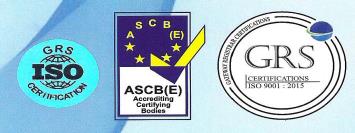Guidelines Energy Efficiency Management Plan
Background.
The IMO’s Marine Environmental Protection Committee (MEPC ) agreed in July 2011 to a number of new regulations which are inserted in Annex VI of MARPOL to deal with greenhouse gases emitted from ships.
The measures will affect all ships and require the issue of a new certificate. The requirements are to be complied with from the first IAPP periodical or renewal survey on or after 1st January 2013. The changes affect all existing ships and this Circular is intended to set out the basic requirements.
International Energy Efficiency Certificate (IEEC).
All ships of 400 GT or more will be required to be issued with an International Energy Efficiency Certificate (IEEC) by the first International Air Pollution Prevention Certificate periodical or renewal survey on or after 1st January 2013.
New ships with a keel laying date on or after 1 st July 2013 will also be required to meet the Energy Efficiency Design Index standards (EEDI) in order to be issued with a certificate. Existing ships will not have to do this. However both new and existing ships will be required to show that they have a Ship’s Energy Efficiency Management Plan (SEEMP) on board at the date of survey in order to be issued with a certificate.
Ships Energy Efficiency Management Plan (SEEMP)
All ships will have to have a Ships Energy Efficiency Management Plan (SEEMP) on board by the first IAPP periodical or renewal survey after 1st January 2013 in order to be issued with an IEEC.
To read more please click on the below link;





